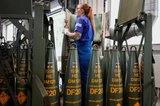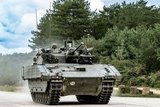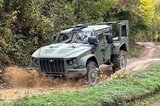Lockheed Martin receives counterfire radar order
Lockheed Martin is to supply additional AN/TPQ-53 (Q-53) long-range counterfire radars to the US Army under a $206 million contract announced on 26 August.
The company will supply 19 Q-53 systems under this order. Lockheed Martin was awarded the original competitive development contract for the Q-53 radar in 2007. Since then it has supplied 32 initial production systems to the US Army, and a further 33 systems are currently in production under a March 2012 order.
The Q-53, formerly designated as EQ-36, is mounted on a five-ton truck and can be rapidly deployed, automatically levelled and remotely operated with a laptop computer or from a fully equipped climate-controlled command vehicle. The system provides soldiers with enhanced 360-degree protection from indirect fire such as mortars, artillery and rockets.
Lee Flake, program director for counterfire target acquisition radar programs, Lockheed Martin Mission Systems & Training, said: ‘The Q-53 radar is helping to save the lives of US forces through its exceptional performance in theatre. Deployed since 2010, we have listened to feedback from our soldiers to ensure the system meets operational demands and is evolving to stay ahead of global threats.’
More from Land Warfare
-
![More details of Indonesia’s Celeris-based 4x4 emerge as customer hunt begins]()
More details of Indonesia’s Celeris-based 4x4 emerge as customer hunt begins
The Texelis Celeris builds on the rolling chassis of the Serval 4×4 lightweight multi-role armoured vehicle which is being built by Texelis and Krauss-Maffei Wegmann Nexter Defence Systems (KNDS France).
-
![KF41 Lynx finds a path but hurdles remain]()
KF41 Lynx finds a path but hurdles remain
The Lynx is typically configured as an IFV operated by a crew of three and with space for up to eight dismounts in the rear troop compartment. The platform is being delivered to Hungary, has been contracted for Italy and will soon be in Ukrainian hands in small numbers.
-
![Analysis: British Army Ajax in service after problematic delivery – but what now?]()
Analysis: British Army Ajax in service after problematic delivery – but what now?
The Ajax has finally rolled into place and achieved what the UK Ministry of Defence describes as Initial Operating Capability. With the production line for UK contracts only going to the end of the decade, what’s next?
-
![Levelling up – how autonomous fire control tackles unmanned lethality head-on]()
Levelling up – how autonomous fire control tackles unmanned lethality head-on
As autonomous weapon systems proliferate, it is now essential to use the same core technologies to counteract and neutralise them.
-
![US Marine Corps force transformation on track, according to update]()
US Marine Corps force transformation on track, according to update
The US Marines Corps’ Force Design 2030 is about restructure, changes to operational concepts, a refresh of equipment and new categories of equipment. The review indicates a high level of success.























